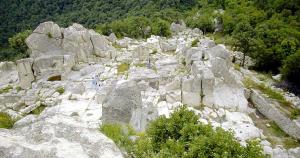Information about the town of Pazardzhik
Pazardzhik PropertiesThe Pazardzhik municipality occupies an area of 636 722 decares, which is 14.3% of the territory of the District of Pazardzhik. The town has a longitude of 2420' E and a latitude of 4211' N along the valley of the Maritsa River, in the fertile Pazardzhik-Plovdiv Field. It occupies the western part of the Upper Thracian Lowland, enclosed between the southern slopes of the Sredna Gora Mountain and the steep northern slopes of the Rhodopes. It borders the Chirpan Elevations to the east. The transitional continental climate end the prevalent fertile alluvial meadow soils and talus soils have made Pazardzhik the centre of a rich farming area.

The municipality borders seven municipalities of the District of Pazardzhik - Strelcha, Panagyurishte, Lessichovo, Septemvri, Rakitovo, Peshtera and Bratsigovo, and also four municipalities of the District of Plovdiv - Saedinenie, Stambpliiski, Maritsa and Rodopi.
It was founded under the name of Tatar Pazardzhik in 1845 on the place of a previously existing sattlement. In the St.Bogoroditsa (God Mother) church is preserved the most impressive iconostatasis in Bulgaria witch was made by master artists of the Debar School and contains wood-carves scenes of the New and Old Testament.
Pazardjik was found during the second half of the XV century, on the left bank of the river Maritza, near the place of the market of the region. The favourable geographic position of the settlement-an important crossroad in the centre of a productive region-favoured its quick development. While it was a very little settlement at the beginning of the XVI century, it became an administrative centre of the region at the end of the century and remained as such until the Liberation.
During XVII century the town continued to grow and strengthened its position. There prospered the trade with iron, leather, rice. It made the first impression to the visiting travellers with its beautiful houses and its clean streets.
In 1718 Gerard Kornelius Drish visited Pazardjik and he wrote "the buildings here according to construction, size and beauty stand higher than those of Nish, Sofia and all other places".
In XIX century Pazardjik is already a big and important centre of crafts and trade, with a population of about 25 000 people.
In 1837 the church "The Virgin Mary" was built, a monument with national significance, famous for its architecture and woodcarving. In the middle of the century Pazardjik became an important cultural centre. In 1847 a class school was opened, and in 1848 - Girls' School. In 1868 a community centre was founded in the town and in 1870 - women's union "Prosveta".
During the Liberation War 1877-78, the town was fired by the retreating Turkish troops. It is liberated on 02/01/1878 from the platoon of General Gurko. After the Liberation, the town grew and spread on the right bank of the river Maritza. At the end of the XIX century barracks and an agricultural school were built .
From the beginning of the XX century people started to build factories, stores, houses and thus the industrial quarter of the town was built.
From 1959 to 1987 Pazardjik is a centre of the region. With the last administrative division of the country from 1999 Pazardjik is a centre of a region already.
Pazardzhik Properties

